Rabbi Silverman has recently had an article published the CCAR Spring 2013 Reform Jewish Quarterly Journal, entitled Ancient and Medieval Musings on the Akeidah: A Test Primarily of Sacrificial Devotion or of Hearing the Right Message? (CCAR Journal: The Reform Jewish Quarterly, Spring 2013:97-112.) This Journal, under the auspices of the Reform movement, selects stimulating and innovative articles from any quarter in the Jewish world. Rabbi Silverman is honored to be among those in their most recent issue. Watch for a link to the article, coming this spring.
Rabbi Silverman's March message:
There are four sections of the Seder–the Kiddush, the telling, the grace after meals, and the Hallel. Each section is punctuated by one of four cups of wine. There are also four children, with four questions. Four is, therefore, a pretty important number at Pesach.
Given this significant use of the number four, it's important that we go through four phases of “being” as well, as one goes through Passover. Why the four cups of wine? To fulfill the passage in the Bible in which God tells us "I rescued you, I brought you out, I redeemed you and I made you into my people". This implies four stages that we should move through with the vehicle of this tremendous and intense holiday. The first phase allows us a sense of being rescued, and that is, in fact, the role of the Seder. Each of us, in each generation, and with every new year, must work to see ourselves as though we were rescued from Egypt; that we ourselves were slaves in Egypt. Eating the marror, the bitter herbs, gives us the sense of immersing ourselves in the story of the enslavement of the Israelites, and the drama of the ten plagues through which we were rescued. At the end, we must strive for the sense that God rescues us.
But it is not only in the Seder that we get a sense of enslavement. Properly attended to, Passover house preparations lead to this sense of enslavement as well! Every rug is vacuumed and combed over, every sofa turned inside out, every fridge and stove is cleaned and scoured inside and underneath. Every stovetop is cleaned and covered, every countertop is kashered. And then there's the shopping, and the dishes, and the schlepping... well you get the idea. When the house preparations are done and finished, concluded with the candlelit search for chametz, and the last crumbs burned in the morning, we are brought out of enslavement!
On a superficial scale, the Afikomen reminds us of redemption, as we give gifts to those who find and redeem it! More importantly, we are redeemed once again in our faith, and in our ardor for the Jewish family, faith and ritual, which have slipped somewhat over the months since the crescendo of Yom Kippur and the Sukkoth holiday. Once again we feel the warm glow of family and community. Top all of this off with study by the first-born and the recitation of Hallel at synagogue, and the special diet of matzah for eight days, and before you know it, once again, we feel a strong sense of being "God's people". As the Talmud teaches: lefum tzara--Agra! To the degree that we strive, that’s the degree that we feel the reward!
May this be the Passover in which we embrace the youthful exuberance and intensity of Pesach. It is this sentiment that will allow us to move through the phases of the each Seder cup of wine–from rescue to release, to redemption, and to making ourselves a part of the nation of the God of Israel. This year the search for leaven will be Sunday evening, March 24. The fast of the first-born will be on Monday morning at 7:00 am on March 25. The first Seder will be that evening and Passover will last all the way through Tuesda,y April 2nd, with Yizkor that Tuesday morning.
May all of us experience transformation from enslaved to fully liberated once again! Chag Kasher v’Sameach, a joyous Pesach to all!
